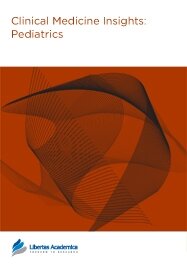

Publication Date: 15 Dec 2011
Type: Original Research
Journal: Clinical Medicine Insights: Pediatrics
Citation: Clinical Medicine Insights: Pediatrics 2012:6 1-9
doi: 10.4137/CMPed.S7427

Background: Coagulase-negative staphylococci (CoNS) are one of the most frequent causative agents of neonatal nosocomial infections, especially in premature and low-weight newborns. Risk factors for infection include extracellular polysaccharide production and consequent biofilm formation that permit adhesion to the smooth surface of catheters and other medical devices. The objective of this study was to identify CoNS strains isolated from 105 newborns admitted to the Neonatal Unit of our hospital, and to evaluate the association of biofilm production and host risk factors with the occurrence of infection.
Methods: CoNS isolates were identified and classified as significant or contaminant based on clinical and laboratory data of the newborn medical records. Perinatal risk factors for infection, neonatal clinical evolution, and antibiotic treatment were analysed. In addition, the presence of genes (icaA, icaC and icaD) responsible for biofilm production in CoNS was investigated.
Results: Among the 130 CoNS strains studied, 66 (50.8%) were classified as clinically significant and 64 (49.2%) as contaminant. There was no difference in the detection of biofilm-specific genes between CoNS strains isolated from newborns with (81.8%) and without infection (84.3%), although 11 (91.7%) of the 12 children whose death was related to CoNS were infected with strains that were positive for these genes. Forty-five (83.3%) of the 54 newborns infected with CoNS were premature and 33 (61.1%) had a birth weight ≤1,500 g. Most newborns infected with CoNS had been submitted to invasive procedures, including catheter use (85.2%), parenteral nutrition (61.1%), and mechanical ventilation (57.4%). S. epidermidis was the most frequently isolated species (81.5%) and was more related to infection (86.3%) than to contamination (76.5%).
Conclusion: Most newborns infected with CoNS presented factors that contributed to the colonization and development of infection with these microorganisms, including a birth weight ≤ 1,500 g, catheter complications, use of a drain, and previous antibiotic treatment. The fact that most children who died of CoNS-related infection carried strains positive for biofilm-specific genes indicates the importance of this virulence factor for the outcome of staphylococcal infections.
PDF (698.13 KB PDF FORMAT)
RIS citation (ENDNOTE, REFERENCE MANAGER, PROCITE, REFWORKS)
BibTex citation (BIBDESK, LATEX)
XML
PMC HTML

It has been a great experience publishing my work with Libertas Academia. The process from submission to publication was fast and transparent. I highly recommend Clinical Medicine Insights: Pediatrics to my colleagues.
Facebook Google+ Twitter
Pinterest Tumblr YouTube